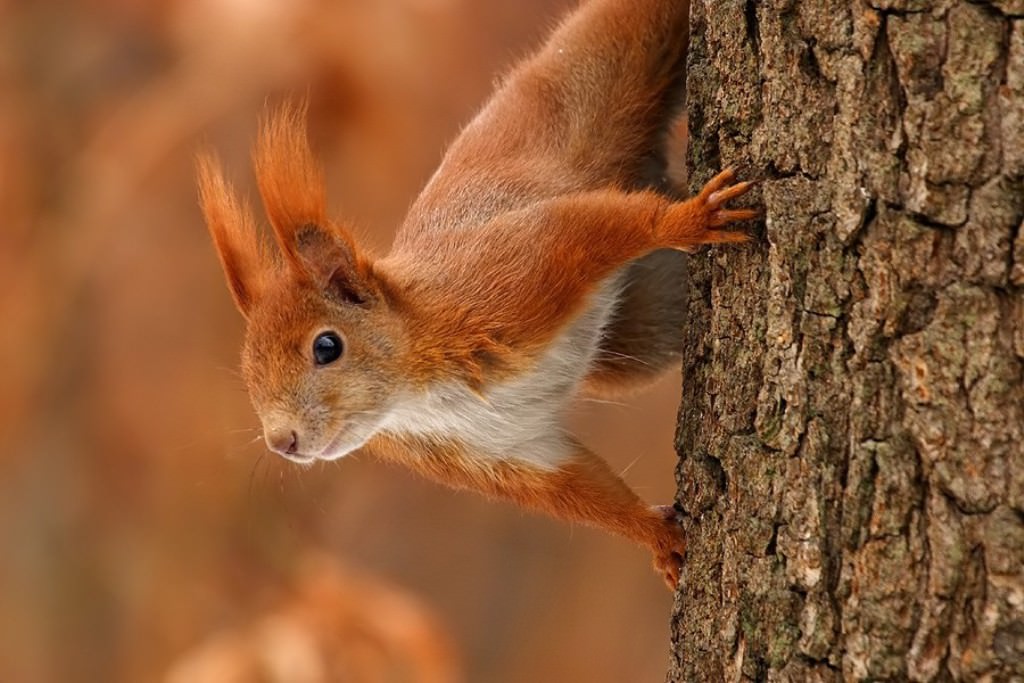Attacks on the grid: the most dangerous saboteur is a squirrel

Oh, the new power line. Cooming soon
With the development of modern technology, it is becoming easier to manage many infrastructure elements of the energy network, as well as the entire network as a whole. At the same time, thanks to the same technologies, attackers had the potential to remotely disable the entire power grid of a region or part of it. For many years, this topic has been rising in cinema, in science fiction. And the threat is quite real - the governments of many countries are concerned about the problem, and the cyber attacks themselves on the grid are already unique.
Judging from the information contained in the report of the US Department of Energy, the probability of successful implementation of cyber attacks on the energy network of any state is becoming increasingly high. However, there is now a much more important problem than cybercriminals seeking to disable the energy infrastructure of a region. And this problem is squirrels. These miniature and cute animals are a huge problem for power grids.

Successful protein attacks on the grid in different regions. Source: CyberSquirrel1
')
This question was raised by Chris Thomas, who once belonged to the L0pht Heavy Industries cyber cracking team. At the Shmoocon Information Security Conference, he stated that proteins really impress with the scale of damage they cause. This problem is relevant not only for the United States, but also for a large number of other countries. In fact, we are talking about all the regions where these rodents are found and tracking the causes of damage to the power grid. The expert also presented his own project CyberSquirrel 1, the purpose of which is to track infrastructure problems caused by animals.
According to the newly-minted researcher, the threat of cyber attacks against the power grid is greatly exaggerated. Now most information security experts believe that if the probability of a successful attack on a critical infrastructure element is non-zero (it may be 1% or less), then all the same, you need to use all the resources at the disposal of the state or company to eliminate the potential threat. .
In fact, everything is not as bad as officials or information security specialists who work for the state. The fact is, Thomas says, that many cases are considered the work of cybercriminals, although this is not the case. In most cases, the alarm is false, natural causes are confused with the intervention of hackers. Even in cases where cybercriminals are really implicated (as, for example, in the case of the power system of Ukraine), the impact of the attack is short-term and with a minimum of negative consequences.
In order to uncover cases where the authorities claim that network outages are caused by problems with hackers, Thomas launched his project CyberSquirrel1. Initially, the idea was simply to notify about the "attacks" of animals on the grid on Twitter. But soon the authors of the project decided to collect more extensive data and visualize this information, for example, on a geographical map. Information about incidents is planned to be collected from various sources, including search engines, messages in social networks, etc. Information, if possible, will be detailed and refined so that it is clear what the reason for the next failure.
 The CyberSquirrel1 team works with messages not only protein. Birds, snakes, raccoons, rats and other animals become causes of interruptions in the supply of energy with enviable regularity. Jellyfish can also be a problem. For example, it was they who caused the shutdown of nuclear power plants in 2013. The huge mass of jellyfish, hitting the tank, from where the station takes water for the turbines, just clogged all the pipelines. Operators had to turn off the third reactor and immediately begin to get rid of several tons of jellyfish caught in the pipes. Within a few days the problem was solved. The plant in question is located in Sweden. Its design is similar to that of the station from Fukushima , Japan, where an accident occurred several years ago.
The CyberSquirrel1 team works with messages not only protein. Birds, snakes, raccoons, rats and other animals become causes of interruptions in the supply of energy with enviable regularity. Jellyfish can also be a problem. For example, it was they who caused the shutdown of nuclear power plants in 2013. The huge mass of jellyfish, hitting the tank, from where the station takes water for the turbines, just clogged all the pipelines. Operators had to turn off the third reactor and immediately begin to get rid of several tons of jellyfish caught in the pipes. Within a few days the problem was solved. The plant in question is located in Sweden. Its design is similar to that of the station from Fukushima , Japan, where an accident occurred several years ago.To date, the project has helped to track about 1,700 outages in various regions, affecting a total of 5 million people. Several cases of damage to the power grid elements resulted in the death of people. The main reason is the drop of cables with supplied current to the ground or directly to people passing by power lines.
According to the authors of the idea, even those animals, about which you cannot even think that they are capable of it, damage the power grid. For example, frogs. But the leaders are nevertheless proteins - they became the cause of power cuts in 879 cases out of one and a half thousand.
Source: https://habr.com/ru/post/400823/
All Articles